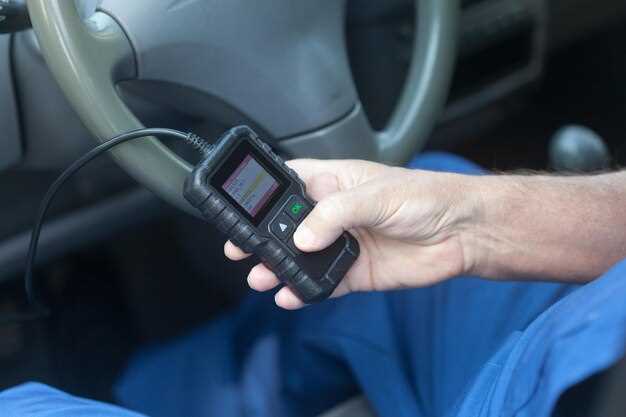How to Use a Multimeter for Car Diagnostics

In the realm of automotive maintenance, testing electrical components is crucial for identifying issues before they escalate into costly repairs. A multimeter serves as an indispensable tool for both professional mechanics and DIY enthusiasts, providing a reliable method for checking voltages, currents, and resistances within a vehicle’s electrical system. Understanding how to utilize this device can significantly enhance the efficiency of car diagnostics.
Every car is a complex system where electrical components play essential roles in functionality and performance. From the battery to the ignition system, issues can arise at any point. By mastering the art of effective testing with a multimeter, users can quickly pinpoint malfunctions, whether they pertain to faulty sensors, wiring dilemmas, or battery failures. This guide will explore the fundamental techniques and best practices for using a multimeter, equipping readers with the knowledge to take control of their vehicle’s diagnostics.
Moreover, the ability to perform accurate testing not only saves time but also enhances safety by addressing electrical problems before they lead to hazardous situations. Whether you’re troubleshooting a problematic starting system or assessing the health of your car’s charging circuit, a multimeter is an essential companion in the journey towards proficient car care and maintenance.
How to Measure Battery Voltage and Identify Issues

To accurately measure battery voltage and diagnose potential issues, you will need a multimeter. This device allows you to determine the current state of your car’s battery and identify any problems that may affect its performance.
Begin by ensuring that your multimeter is set to the appropriate voltage range, typically 20 volts for automotive batteries. Once set, approach the battery safely, opening the hood and locating the battery terminals. Ensure you can access both the positive (+) and negative (-) terminals without any obstructions.
Next, take the red lead from the multimeter and connect it to the positive terminal of the battery. Following this, connect the black lead to the negative terminal. Once the leads are securely in place, observe the multimeter display to read the voltage. A healthy, fully charged car battery should typically measure around 12.6 volts or higher.
If the reading is between 12.4 to 12.6 volts, the battery is moderately charged, while a reading below 12.4 volts indicates that the battery is discharged and may require charging. If the voltage is lower than 12 volts, this could signal a failing battery or an issue with the charging system.
To identify issues further, consider measuring the voltage while the engine is running. A well-functioning alternator should produce a voltage reading between 13.7 to 14.7 volts. If the reading falls below this range, the alternator might not be charging the battery effectively, which can lead to battery drainage.
Lastly, if you observe fluctuations or irregular readings on the multimeter while making these measurements, it may suggest poor connections or corroded terminals. Inspect the battery terminals for corrosion and ensure that connections are tight. Cleaning any corrosion and ensuring proper contact can significantly improve battery performance.
Testing Electrical Connections and Continuity in Your Vehicle
A reliable electrical system is crucial for the proper functioning of your vehicle. Using a multimeter is an effective way to diagnose issues related to electrical connections and continuity. Here’s a concise guide on how to conduct tests using this versatile tool.
Testing electrical connections helps you identify loose, corroded, or damaged wires that may affect the performance of your vehicle. Follow these steps to check for continuity and ensure connections are solid:
- Safety First: Always disconnect the vehicle’s battery before inspecting electrical components to prevent short circuits.
- Select the Correct Setting: Set your multimeter to the continuity or resistance setting (Ω). This allows you to measure the resistance in the circuit.
- Test the Multimeter: Before proceeding, touch the multimeter probes together; you should hear a beep or see nearly zero resistance. This indicates the multimeter is functioning correctly.
Now, proceed to test the connections:
- Identify Points to Test: Locate the terminals or connectors where you suspect a problem exists.
- Probe the Connection: Place one probe on each side of the connection you want to test.
- Interpret the Results: If you hear a beep or see a low resistance reading, the connection is good. If there is no beep or a high resistance reading is displayed, the connection may be faulty.
For more comprehensive analysis, you can check multiple points in the circuit, including:
- Ground connections
- Battery terminals
- Fuses
- Wiring harnesses
In summary, testing electrical connections and continuity with a multimeter can save time and resources in your vehicle maintenance. Regular checks will help prevent larger issues, ensuring your vehicle remains reliable on the road.
Using a Multimeter to Diagnose Sensor Faults and Performance

A multimeter is an essential tool for diagnosing sensor faults and performance in vehicles. By measuring voltage, resistance, and current, it allows technicians to pinpoint issues that may affect the operation of various sensors in the car.
One common application of a multimeter is testing the voltage output of sensors, such as oxygen sensors or temperature sensors. To perform this test, connect the multimeter leads to the appropriate terminals of the sensor while the ignition is on. Comparing the readings with the manufacturer’s specifications helps to identify if the sensor is functioning correctly or if it’s providing erroneous data.
Another important diagnostic procedure involves checking the resistance of sensors, especially those that rely on thermistors or variable resistors. By disconnecting the sensor from the circuit and measuring the resistance across its terminals, you can determine if it operates within the expected range. A multimeter can reveal if a sensor is shorted or open, indicating a failure that requires replacement.
Current measurement is also critical when diagnosing sensors that are part of the vehicle’s active circuitry. Measuring the current flowing through a sensor can assist in identifying short circuits or excessive current draw, both of which can affect performance. By carefully connecting the multimeter in series with the sensor circuit, technicians can obtain the current reading and assess the health of the components involved.
Lastly, using a multimeter in conjunction with a vehicle service manual can greatly enhance the diagnostic process. The manual typically provides specific voltage, resistance, and current values for each sensor, enabling a more accurate analysis and faster troubleshooting. Properly utilizing a multimeter not only saves time but also increases the likelihood of repairing the vehicle effectively on the first attempt.

